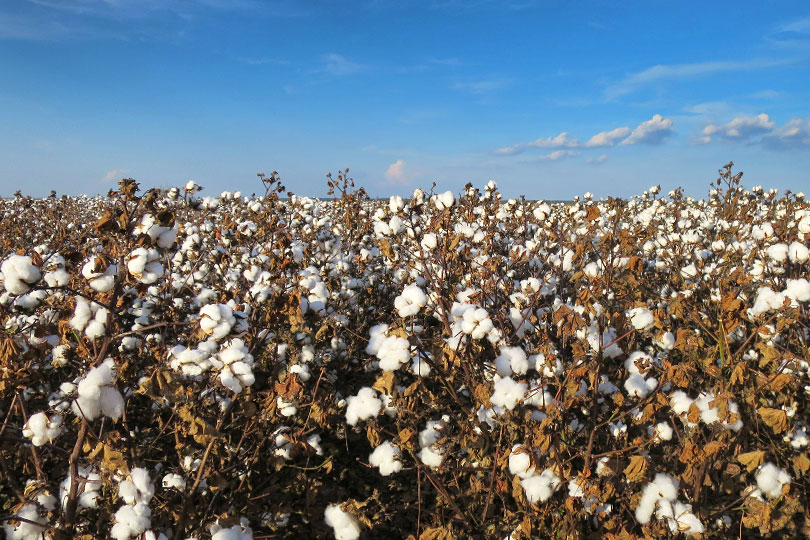By Jessica Domel
Multimedia Reporter
After being largely left out of the 2014 Farm Bill, cotton growers are once again eligible for safety net coverage through Title 1 of the 2018 Farm Bill.
“Under the 2014 Farm Bill, producers made a one-time ARC and PLC election by crop and by farm that remained in effect for the 2014 to 2018 crop years for commodities other than seed cotton,” Dr. Jody Campiche, vice president of Economics and Policy Analysis for the National Cotton Council (NCC), said. “For seed cotton, producers made an ARC/PLC election effective for the 2018 crop year. The ARC/PLC provisions in the 2018 Farm Bill allow producers to make an ARC/PLC election by crop and by farm for the 2019, 2020 and 2021 crop years.”
Starting with the 2021-22 crop year, farmers may choose coverage through the Agriculture Risk Coverage (ARC) or Price Loss Coverage (PLC) programs annually.
Those who choose ARC or PLC this year will then be ineligible for STAX on planted acres on that farm for the remainder of the farm bill.
“Producers can enroll other commodities on the farm in ARC or PLC and still remain eligible for STAX, as long as seed cotton base acres are not enrolled in ARC or PLC,” Campiche said. “Producers who elect to enroll in ARC and PLC have the option of purchasing SCO (Supplemental Coverage Option). Producers who have covered commodities who elect ARC are ineligible for SCO on their planted acres.”
The 2018 Farm Bill includes several changes to the ARC-County program, which issues payments to enrolled farmers when the actual county revenue falls below the ARC-County guarantee.
“Payment rates will now be based on the county where each farm is physically located as compared to the FSA administrative county for each farm in the 2014 Farm Bill,” Campiche said. “For ARC-County data sources, FSA (Farm Service Agency) will use RMA data when available, followed by NASS (National Agricultural Statistics Service) data, and then data from state committee sources.”
The criteria for calculating ARC-County irrigated and non-irrigated yields has been revised in the new farm bill.
“The county will qualify if RMA irrigated and non-irrigated yield data is available in three of the five years between 2013 and 2017 or if using FSA data from 2013 to 2017 at least 10 percent of the acreage was irrigated and 10 percent was non-irrigated, and an average of 5,000 acres was planted in every year from 2013 to 2017,” Campiche said.
The ARC-County seed cotton benchmark price for the 2019-20 crop year is 36.7 cents per pound.
PLC changes include establishing statutory reference prices for each commodity.
For seed cotton, it’s 36.7 cents.
The seed cotton price floor for PLC is 25 cents per pound.
“The provisions of the 2018 Farm Bill include an escalator provision that could potentially increase the effective reference price to as much as 115 percent of the statutory reference price based on 85 percent of the five-year Olympic average of the national average marketing or price,” Campiche said.
Farm owners and operators may update PLC payment yields starting with the 2020-21 crop year.
“For cotton, the yield update is calculated by multiplying 81 percent of the average farm yields from 2013 to 2017. Only years that a crop was planted are included in the average,” Campiche said. “Seventy-five percent of the county average yield for 2013 to 2017 will be used as a plug yield for any years where the farm’s yield is below 75 percent of the county average yield.”
A payment is made to farmers enrolled in PLC when the higher of the marketing year average price or price floor is less than the effective reference price.
The 2018 Farm Bill does not include changes to the seed cotton base acres and unassigned base resulting from the 2018 conversion of generic base acres, according to Campiche.
Unassigned base acres are not eligible for ARC and PLC payments.
“A key change is that other crop bases in permanent grass or pasture or fallow for the entire period of 2009 to 2017 will no longer be eligible for ARC or PLC from 2019 to 2023,” Campiche said. “The base acres will be maintained with the Farm Service Agency, grass or pasture acreage is eligible for the CSP (Conservation Stewardship Program) grasslands program.”
The ARC and PLC election process is currently underway at FSA offices.
The election made this crop year will also apply to the 2020-21 crop year, but farmers will still need to enroll in for the 2020-21 crop year.
NCC’s full presentation on the program election process is available on cotton.org.

